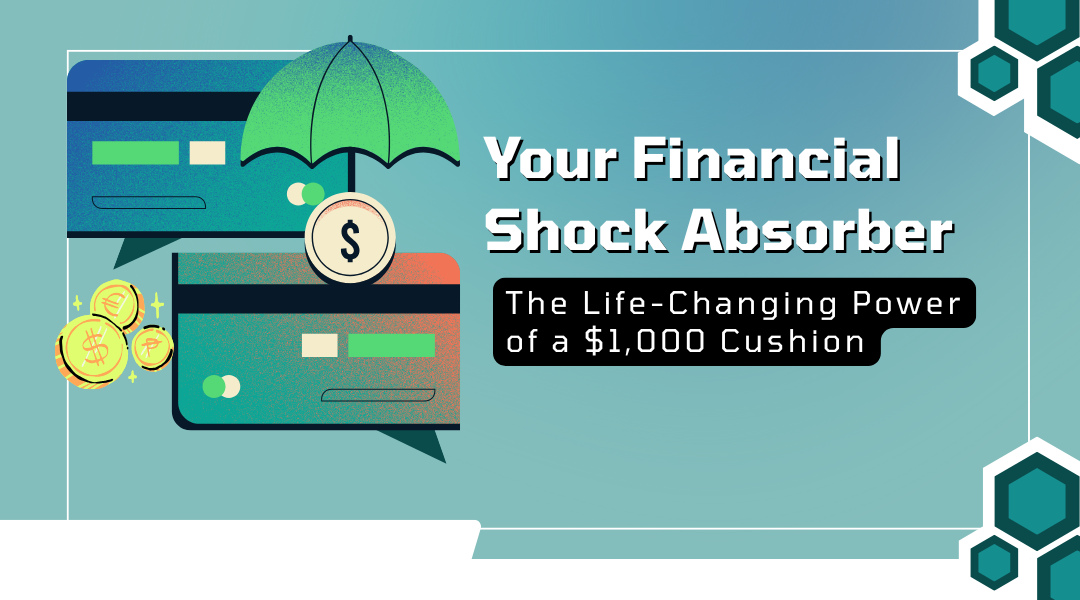Imagine this: it’s 8 PM on a rainy Tuesday. You’re driving home from work and a strange clunking sound turns into a full-blown breakdown on the side of the road. The tow truck and repair will cost $600. For many, this scenario triggers a wave of panic, followed by the dreaded reach for a high-interest credit card. But for you? It’s a minor inconvenience. You have a secret weapon: your starter emergency fund.
This isn’t just about saving money. It’s about buying peace of mind. Before you think about stocks, retirement, or a down payment, your first and most critical financial mission is to build a simple, accessible cash buffer. This $1,000 is your financial shock absorber—it doesn’t change your life’s destination, but it makes the inevitable bumps in the road infinitely smoother.
Why This First $1,000 is a Game Changer
You might wonder why we start with $1,000 and not three months’ expenses. The reason is psychological as much as it is practical.
- It’s a Tangible Victory: Saving $1,000 is a clear, achievable target. Hitting this milestone provides a powerful shot of confidence. It transforms you from someone who wants to be good with money into someone who has proven they can be. This momentum is fuel for your entire financial journey.
- It Handles the Majority of Life’s Surprises: While it won’t cover a job loss, a $1,000 cushion is more than enough to manage most of the acute emergencies that typically derail budgets: a surprise dental crown, a major appliance repair, an urgent vet visit, or that unexpected car bill. It stops a small problem from snowballing into a debt avalanche.
- It Breaks the Debt Cycle: This is the most powerful benefit. Without this cushion, every unexpected expense forces you into a reactive position, often leading to credit card debt that comes with punishing interest. Your emergency fund allows you to be proactive. You solve the problem with your own money, keeping you firmly in control.
Your Blueprint to That First $1,000
Accomplishing this goal requires a short-term, focused mindset. Think of it as a 30- to 90-day financial sprint.
Phase 1: Declare Your “Why” and Make It Official
This isn’t an abstract idea. Get specific. What financial stressor keeps you up at night? Is it the fear of a medical bill? The anxiety of a car repair? Write that down. Then, make it official by opening a separate savings account, ideally at a different bank from your checking account. Naming it something like “Peace of Mind Fund” or “Life Happens Fund” reinforces its purpose. Out of sight truly is out of mind, making it less tempting to dip into for non-emergencies.
Phase 2: Choose Your Timeline and Tactic
How quickly can you realistically assemble this $1,000? Your approach will depend on your timeline.
- The 30-Day Blitz (Aggressive): If you need this safety net now, this is an all-hands-on-deck effort.
- Tactic: Sell things. Look around your home—the guitar you never play, the designer handbag collecting dust, the old electronics. Online marketplaces can turn your clutter into cash fast.
- Tactic: Take on a short-term gig. Drive for a delivery service on weekends, pet-sit for a week, or use a skill like writing or graphic design for a quick freelance project. Every extra dollar for one month goes straight to the fund.
- The 90-Day Plan (Steady & Sustainable): This is a more moderate approach that focuses on trimming expenses and automating savings.
- Tactic: The “Expense Swap.” For three months, identify one or two recurring expenses you can pause or reduce. Could you switch to a cheaper streaming tier? Commit to brewing coffee at home four days a week? Pack your lunch three days a week? Redirect the exact amount you save each week into your new account.
- Tactic: Automate a weekly transfer. Based on your 90-day goal, you’d need to save about $84 per week. Set up an automatic transfer every Friday. This “pay yourself first” mentality makes saving effortless.
Phase 3: Protect the Fund at All Costs
The biggest challenge isn’t saving the money; it’s defining what constitutes an emergency. An emergency is an unexpected, necessary expense that impacts your health, safety, or ability to earn an income.
- This is an emergency: A broken water heater, an emergency root canal, a critical car repair for your commute.
- This is NOT an emergency: A 50%-off sale, a friend’s destination wedding, a spontaneous weekend trip.
If you must use the fund, your next financial priority is to replenish it immediately. Its job is to always be on standby.
The Real Payoff: The Mindset Shift
When you finally see that $1,000 sitting in your dedicated account, something profound changes. The anxiety that used to accompany an unexpected bill begins to fade. You start to feel a sense of agency. You’re no longer at the mercy of life’s surprises; you’ve built your own insulation.
This shift is more valuable than the money itself. It proves you have what it takes to set a goal and achieve it. This confidence is the foundation upon which every other financial goal—paying off debt, saving for a house, investing for retirement—is built.
Conclusion: The First Step to True Financial Confidence
Building your first $1,000 emergency fund is the single most impactful step you can take toward financial stability. It’s a practical tool that solves immediate problems, but its greater value is psychological. It transforms you from being financially fragile to being financially resilient.
This cushion doesn’t just protect your bank account; it protects your mental energy. It gives you the breathing room to make thoughtful decisions instead of panicked ones. Consider this your first major financial achievement. It’s the proof you need that you are capable of building the secure future you want. Once this foundation is solid, you’re ready to build anything on top of it.
